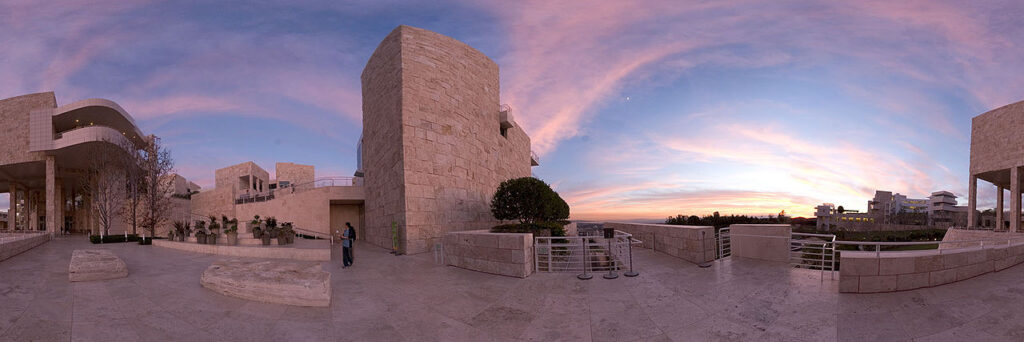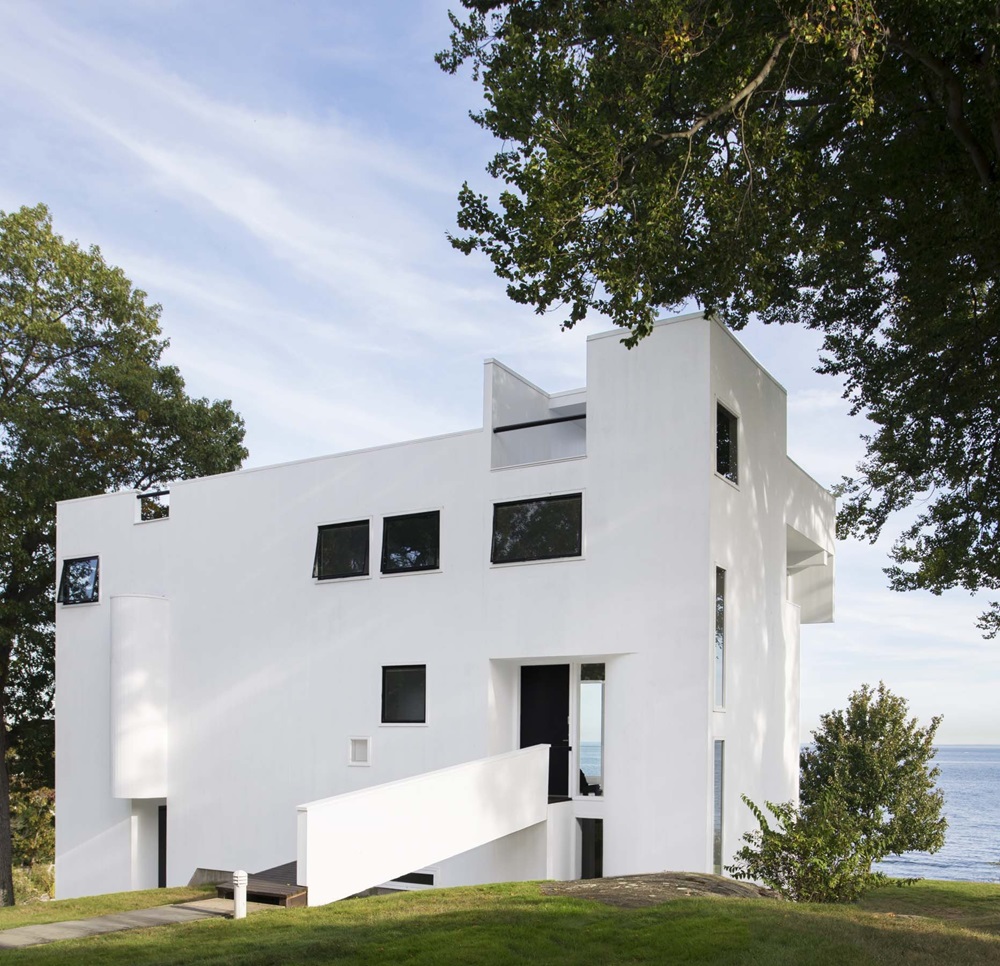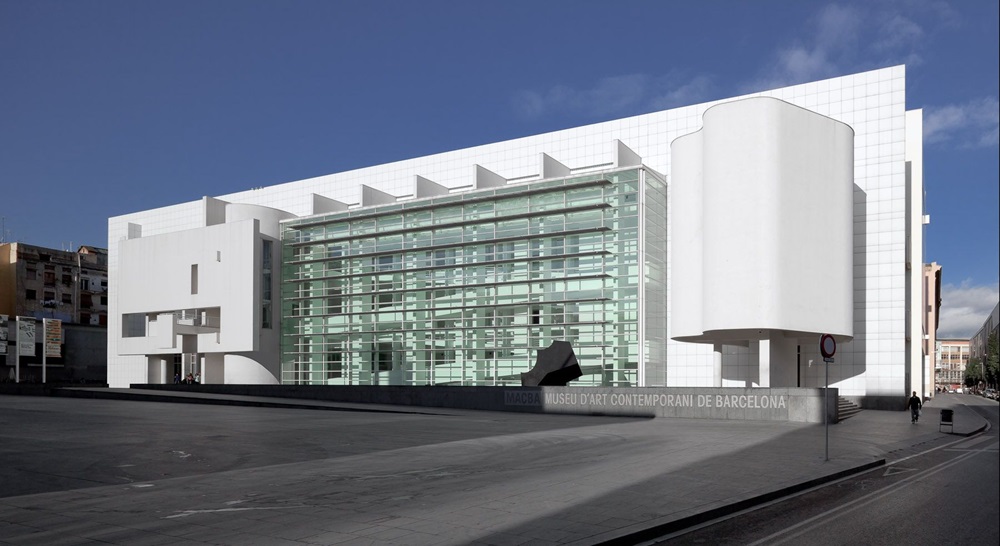Renowned American architect Richard Meier is well-known for his modernist, white, streamlined structures. Meier, born in Newark, New Jersey, on October 12, 1934, is renowned worldwide for his sophisticated yet understated designs. In 1963, he established Richard Meier & Partners Architects LLP. His most well-known projects include the Getty Centre in Los Angeles, the Barcelona Museum of Contemporary Art, and the Jubilee Church in Rome. Meier creates visually arresting and harmonious structures by frequently using geometric forms, wide spaces, and many white surfaces in his designs.
Meier has received many awards during his career, including the Pritzker Architecture Prize in 1984, regarded as the most incredible honour in architecture. His unique style and meticulous attention to detail have inspired architects worldwide, leaving a lasting impression on modern architecture. Renowned for his modernist designs focusing on geometric shapes, lightness, and transparency, Richard Meier is highly influential in contemporary architecture. Meier first appeared as one of the architects known as the “Whites,” or the “New York Five,” alongside Michael Graves and Peter Eisenman. They were renowned for adhering to modernist ideas, emphasising form and space while mainly employing white as a primary colour.
Meier’s characteristic design, which frequently consists of white geometric forms, open spaces, and heavy use of glass, makes his work easily identifiable. His designs focus on the interaction of light and space, clarity, and simplicity. Among the many famous structures in Meier’s portfolio are the Jubilee Church in Rome, the Barcelona Museum of Contemporary Art, and the Getty Centre in Los Angeles. These constructions, which have become landmarks, exemplify his mastery of spatial organisation and materials.

Meier is well known for his meticulous attention to detail and steadfast dedication to the highest calibre of design. His structures are praised for their practicality and integrity as architectural pieces, frequently functioning as both proper places for their intended purposes and stunning works of art. Meier’s impact goes well beyond his physical creations. Numerous architects have been influenced by his concepts and design tenets, which still affect the course of modern architecture. Many practitioners today may relate to his emphasis on clarity, simplicity, and the interaction between architecture and its surroundings.
Meier has won various accolades, including the Pritzker Architecture Prize in 1984—widely regarded as the pinnacle of architectural achievements. His honours serve as a testament to his significant contributions to the field.
The Smith House by Richard Meier
Architectural buildings are intricate material creations of three main components: a system of spaces organised by the physical structure, a spatial experience created by the system of spaces, and a physical structure itself. Historically, the aesthetic experience of architecture has been primarily linked to the materiality of its form or human form, whether in its sensual, tactile aspects, emotional reaction to form, emotional empathy, or imaginative activity linked to the form. However, many buildings have abstract logical frameworks underneath their material construction that control how they are put together, give them order, and give rise to their formal characteristics. The subject of this paper is these structures.

Taking the Smith house by Richard Meier (1965-1967) as an example, Saleem M. Dahabreh argues that the aesthetic appreciation of buildings requires more than their sensuous description; it requires an understanding of their logical forms in a sense, uses the term. The reconstruction of logical form entails a “close reading” of the building in Eisenman’s terms to see ‘what is not present in the building’ and to focus less on the optical and more on the visual. How close reading contributes to aesthetic appreciation is along the lines of Scruton’s proposition in The Aesthetics of Architecture, where it claimed that the aesthetic experience of an object does not depend on its sensible characteristics nor does it depend on the feelings and emotional response to that object; but rather, on the active imagination that gives an overall coherence to that complex object.
According to Saleem M. Dahabreh, the Smith House, a description of the house is foremost. Located on 1 1/2 acres of land along the rocky coastline of Darien, Connecticut, and overlooking the Long Island South, the Smith House was built between (1965-67) as a vacation house for Fredrick and Carole Smith and their two children. The house is designed as a stand-alone rectilinear mass, painted all in white, constructed of vertical wood siding, steel Lally columns, glass, and brick for its chimney. The house has three floors: a living room and dining room opening to outdoor terraces and a kitchen with service areas on the ground floor. En trance area, the main bedroom and accompanying bathroom, a two-storey living room on the first floor, two individual bedrooms, a bathroom, a guest room, and a library-play balcony overlooking the two-story living room on the first floor. An outdoor roof deck tops the house.
The house’s design can be understood as a dialectic proposition between two distinct but related concepts: the real and analytical, which deals with design desiderata consisting of constraints derived from site and programme, circulation and entrance, and structure and enclosure, and the ideal and abstract, which is concerned with formal design systems and principles. This work aims to clarify the ideal and abstract that make up the logical shape of the house, notwithstanding their close relationship. Meier uses the “colourlessness” and “a-contextualness” of the house’s free-standing mass to uphold the importance of the ideal and abstract.
According to Saleem M. Dahabreh, the aesthetics of exemplary buildings, such as the Smith House, not only lie in their tangible and sensory attributes but also manifest in ‘how’ buildings came to be in their corporeality. This ‘how’ is ordered by the logical form that operates between the abstract and the real, simultaneously capturing the conceptual essence of the architectural work and guiding its physical manipulation. This aesthetic reading of architecture is only possible through a ‘close reading’ where the intellect is activated to distil the abstract from the concrete and reconstruct it logically and constructively. Furthermore, as can be seen from “the formal analysis of the Smith House, the manipulation of the logical form not only skillfully articulates the human form and satisfies normative criteria of order, but also brings in more profound thought and theory and renders the non-discursive discursive resulting in architecture that involves critical thinking and reflection rather than mere application of knowledge.
Aesthetics of architectural form
The Barcelona Museum of Contemporary Art, also known as the Museu d’Art Contemporani de Barcelona (MACBA), is housed in Casa de la Caritat, a former monastic community in Barcelona, Spain’s historic Gothic district of El Raval. Richard Meier (1988–1995) created the museum to create a rigorous conversation between modern art and the traditional urban fabric. Many authors see Meier’s architecture as having a neo-Crocussian quality, a formal reinterpretation of modernism and rationalism.
According to Nancy Al Assaf, The spatial organization of the building relies on programmatic separation between public and private uses. The private section, on the western side, contains a shop, a loading area and a café on the ground level. The upper floors host office spaces over seven levels, a research library and an educational centre. The public section, on the eastern side, contains the main exhibition spaces distributed over three levels. From west to east, Meier arranged the functions progressively from the most private to the most public uses. The central rectangular prism is clad with white enamelled steel panels, while the other geometric additions, planar elements, cylinders and the free-form are finished in white concrete.

According to Nancy Al Assaf, Meier created juxtaposed platonic forms using the essential architectural elements of line, plane, and mass. Accordingly, the form of the museum refers to itself and exemplifies its logic. Given this, the content of form is internalized within itself and exists independently of any other visual reference in the world. Literal exemplification or, in architecture, the spatial theme presents a metronomic relation or relation between the elements and the whole that unifies the architectural composition. In the museum, Meier created the theme of abstractness by manipulating an abstract geometry of white forms to achieve spatial richness. Whiteness of form, perpendicular axes on spatial layers, spatial interlocks and visual cues that trace the design logic all shift focus from the design elements to the relation between them. Therefore, the theme of abstractness is emphasized, and the theme of universality is also created because the interest exceeds the perceptible structure to the implied deep structure, i.e. universal principles as proportions and modules. Meier also constructed the theme of tension, controlling the dramatic quality between opposing forces in the museum.
The built world has been profoundly impacted by Richard Meier’s contributions to architecture, which have shaped contemporary design’s practical and aesthetic paradigms. Meier, who is renowned for his mastery of form, light, and space, is an inspiration to architects and designers all over the world with his trademark white structures and meticulous attention to detail. His adherence to modernist ideals and creative approach to residential and urban design projects highlight a legacy beyond physical structures and affect how we perceive and engage with our environment. Richard Meier has made substantial and long-lasting contributions to the architectural landscape and the cultural discourse surrounding design, as evident in his work.





